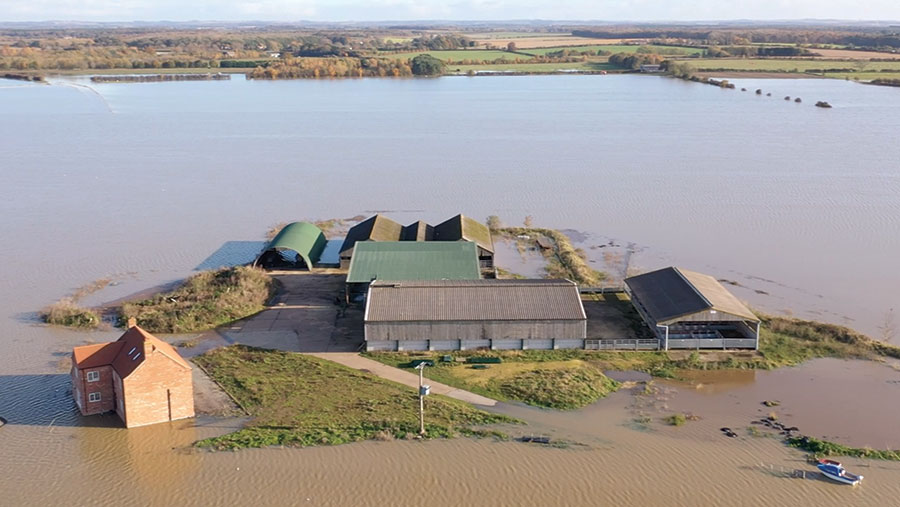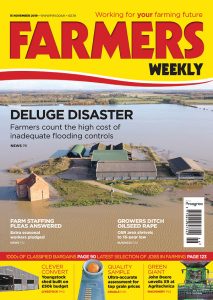FW Opinion: What government must do to help flood-hit farmers

Two issues have dominated the news this week – the general election and flooding.
Needless to say, attempts have been made to link the two, with opposition parties quick to blame years of underinvestment by the current government for a bad situation made worse. To a certain extent, this is true.
Yes, the sheer volume of water has been exceptional, with one month’s rain falling in just 24 hours in some localities.
See also: Charities fast-track help for flood-hit farmers
But long-term watercourse neglect has compounded the situation, with the river system in parts of Yorkshire, Lincolnshire and Derbyshire simply unable to cope as a result of silted channels and weakened defences.
About the author
 Phil Clarke
Phil Clarke
Executive editor, Farmers Weekly
Contact:
E: philip.clarke@reedbusiness.com
T: @FWphilclarke
Read more articles by Philip Clarke
Overall expenditure on flood protection may have risen in recent years, but resources have been allocated on the basis of population density, with urban areas favoured over rural ones.
Flood management
 Flood management also appears rather disjointed, with the Environment Agency looking after bigger rivers, local authorities in charge of smaller ones and drainage boards responsible for water levels across the country. This creates confusion.
Flood management also appears rather disjointed, with the Environment Agency looking after bigger rivers, local authorities in charge of smaller ones and drainage boards responsible for water levels across the country. This creates confusion.
The consequences of all this could not be illustrated more graphically than by the cover of this week’s Farmers Weekly, highlighting the isolation and helplessness felt by flood-affected farmers.
Social media has also been awash with videos, photos and anecdotes of broken dykes, submerged fields, destroyed crops and stranded livestock.
But even in those areas that have just been saturated, not actually flooded, the challenges of this wet autumn have been immense.
Harvesting potatoes has been nigh on impossible for some, meaning those crops will be left to rot.
Others have failed to sow significant areas for next year’s cereal crop, so will turn to spring cropping with an inevitable yield penalty.
Disease pressure
Disease pressure may also mount, as routine spraying has proved impossible, and slugs have been having a field day.
Livestock farmers, too, are up against it, having been forced to house stock early and tap into winter rations, pushing up costs at a time when finished beef prices are on the floor.
Slurry storage is another headache for some producers.
The full economic consequences of all this are yet to be felt, though undoubtedly there will be business casualties.
This week’s announcement of grant aid of between £500 to £25,000 for flood-affected farmers to cover any uninsurable losses is therefore welcome.
But it is also imperative that the Rural Payments Agency gets BPS payments out as quickly as possible in December to ease cashflow, while farmers struggling to meet the terms of their agri-environment schemes or greening requirements must be treated leniently.
Farming Recovery Fund 2019: Guidance and application form
Find out if you are eligible and how to apply on the Defra website. Farmers have until until 31 March 2020 to submit applications.
Investment needed
Longer term, there is a need for a step change in investment, to improve watercourse maintenance and bolster flood protection, and an even greater need for better management and more strategic planning.
Farmers are willing to play their part in flood mitigation – be it changing practices to slow run-off from higher ground or allowing land to be flooded further downstream.
But this needs to be part of a coherent policy, with proper reward for the provision of these public goods and a clear recognition of the importance of food production.
If nothing else, these recent events serve as a timely reminder of just how vulnerable the food supply chain can be.
Helping farmers cope with the challenges thrown up by more frequent extreme weather events must be a top priority – whichever political party prevails in next month’s general election.
